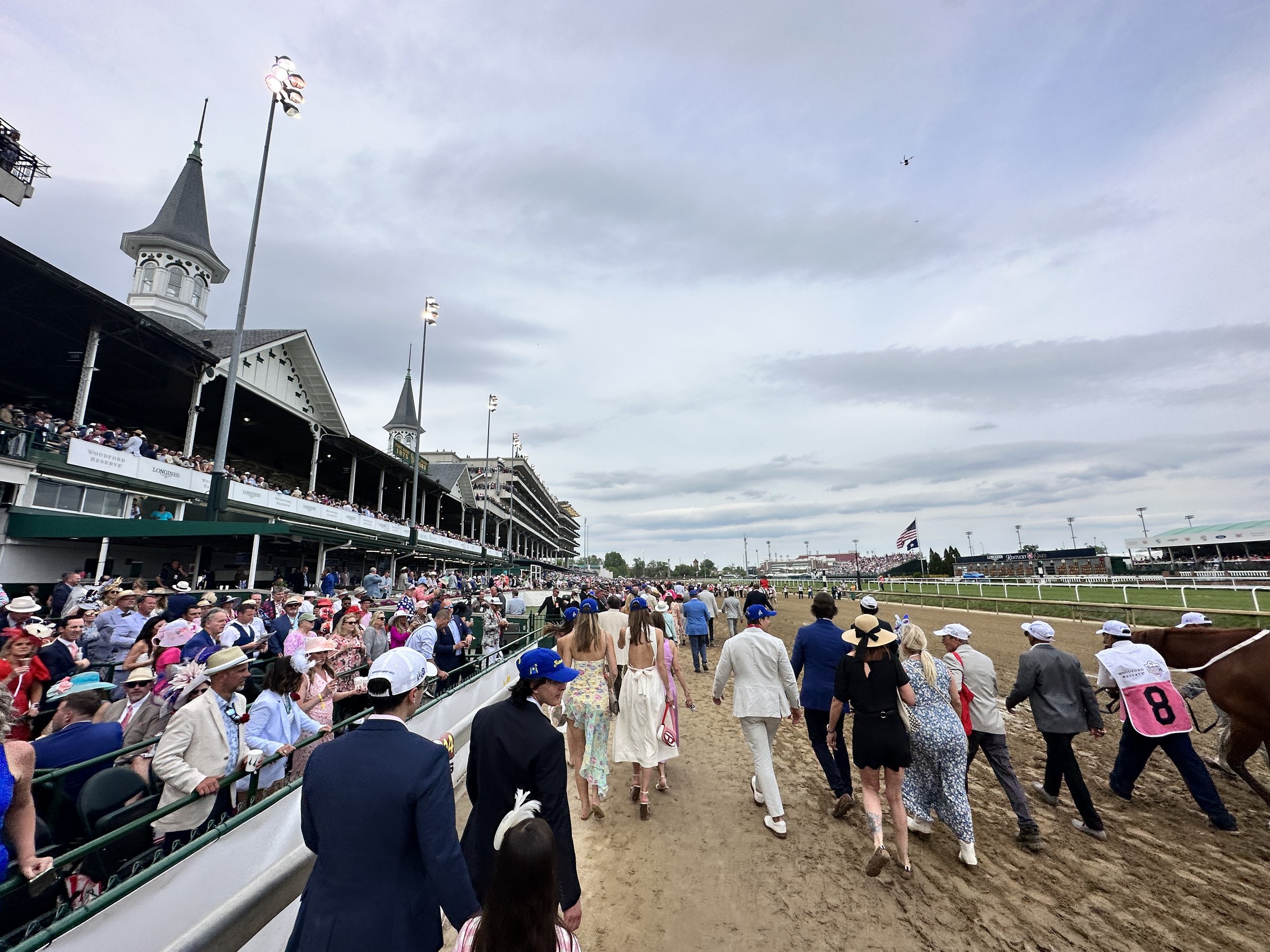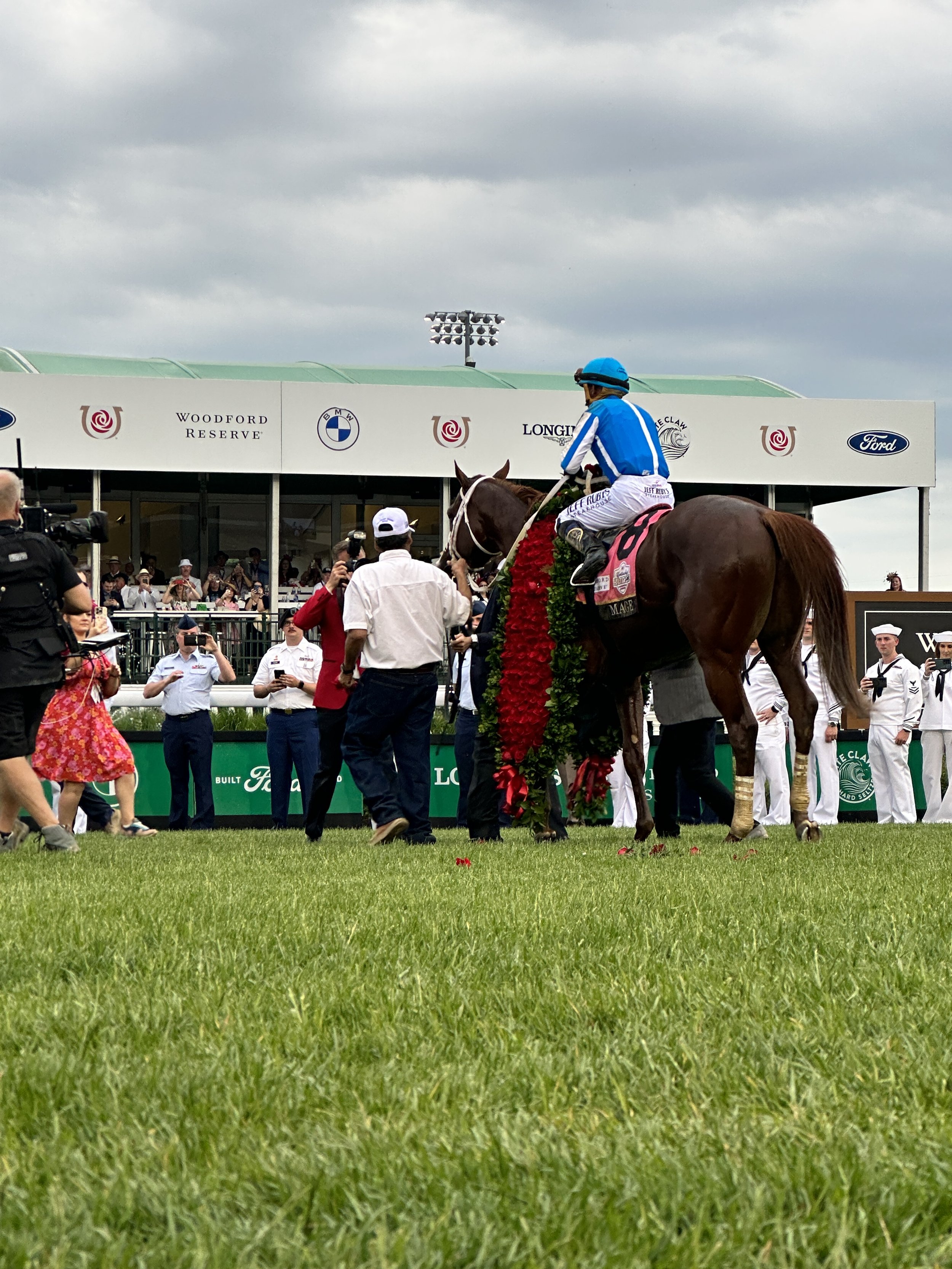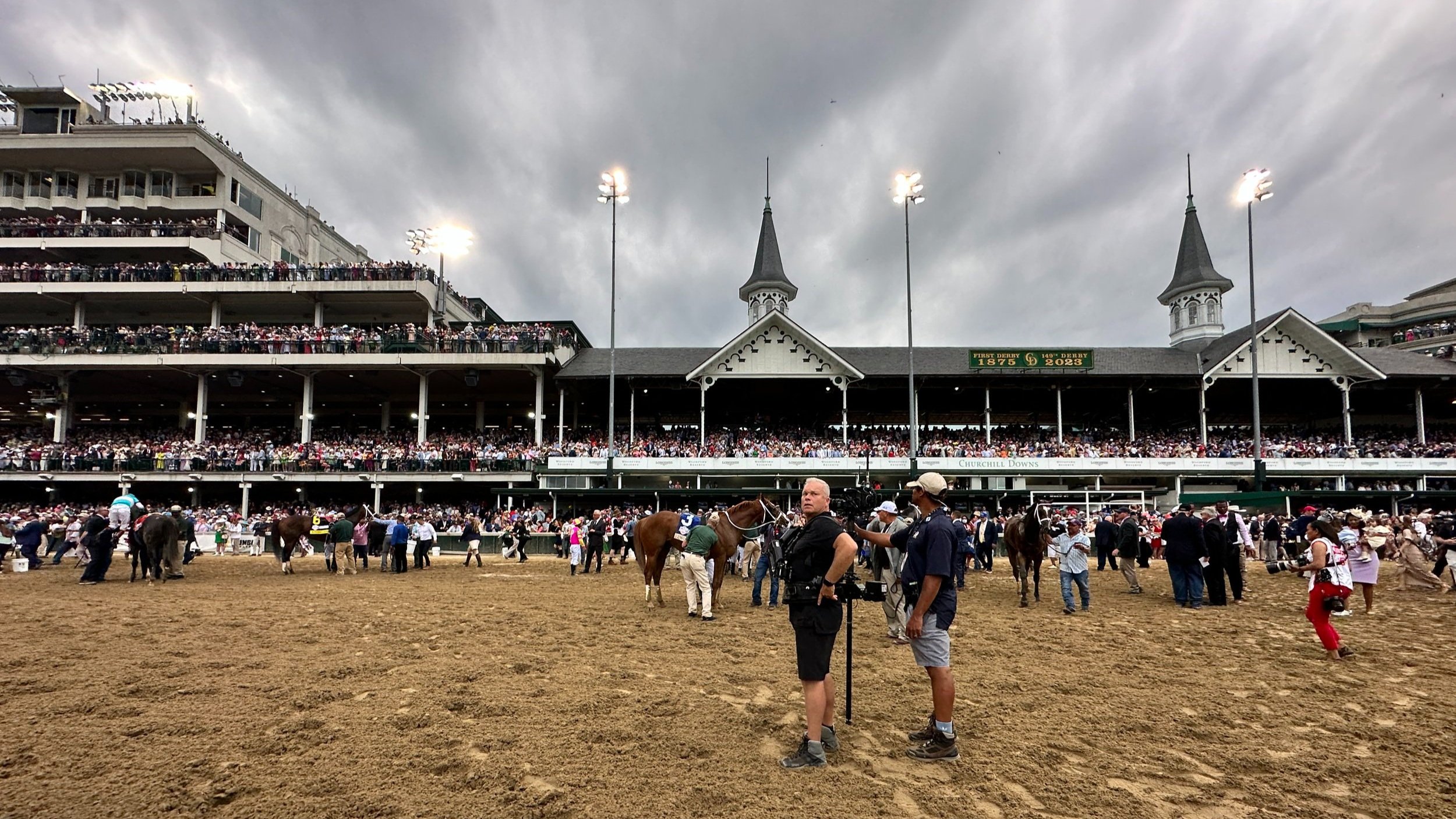Fast Facts About Kentucky Derby History!
Churchill Downs has been a cornerstone of Louisville, Kentucky since its founding in 1875, hosting the prestigious Kentucky Derby. Inspired by the Epsom Derby and other prominent English races, Meriweather Lewis Clark Jr. founded Churchill Downs with the intention of bringing elite horse racing to Kentucky. The inaugural Spring Meet opened on May 17, 1875, attracting nearly 10,000 attendees, and featured the first-ever Kentucky Derby, won by Aristides over a 1 ½-mile course.
The romance of the Derby attracts fans from all around the world to witness a mere two-minute race steeped in tradition. One of the most famous traditions of Derby day is “the walkover,” where the ownership connections and training team associated with each horse racing in the Derby are assembled along the backstretch to walk over to the paddock with their horse. Race spectators often wear extravagant hats, dresses, and suits, turning Churchill Downs into a glamorous fashion show, complete with a red carpet.
Another cherished tradition is the presentation of roses. Colonel M. Lewis Clark established the rose as the official flower of the Kentucky Derby in 1884, and in 1925, the phrase "Run for the Roses" was coined by sports journalist Bill Corum. Today, the winning horse is adorned with a garland of 400 roses, meticulously hand-sewn into a 2 ½-yard long, 14-inch wide, 40-pound masterpiece.
Over the years, the Derby has seen several changes. In 1896, the race distance was shortened to 1 ¼ mile – the same distance it remains today. In 1940, Churchill Downs introduced the electrical starting gate, replacing the traditional starting rope and ensuring a fair start for every horse. In 1975, the field size was expanded to 20 horses, also bringing the introduction of an auxiliary gate to accommodate the larger field. However, this created concerns as horses were positioned further from the inside rail. In 2020, Churchill Downs unveiled the Steriline single 20-stall gate, addressing these concerns and ensuring a fair start for all contenders.
Of the 40 fillies to have competed in the Derby since 1875, only three have ever won: Regret in 1915, Genuine Risk in 1980, and Winning Colors in 1988. The most recent filly to compete was Devil May Care in 2010, finishing 10th.
The Kentucky Derby is also the first leg of the Triple Crown, which includes the Preakness Stakes and the Belmont Stakes. Winning all three races is a rare feat, and to date has only been achieved by 13 horses, the latest being Justify in 2018. Twenty-three horses have won both the Kentucky Derby and the Preakness Stakes but failed to clinch the Belmont.
Traditionally held on the first Saturday in May, the Kentucky Derby is the longest-continuously held sporting event in the United States. Before 1910, there were a few occasions in which the Derby was held on days of the week other than a Saturday, however, there have been no instances of the Derby being held on a Sunday.
The Derby has been postponed only twice: in 1945 and 2020. In 1945, World War II ended just two days before the Derby's scheduled date, leading to its postponement to June 9. In 2020, the COVID-19 pandemic forced the Derby to be postponed to September 5, with only 23,000 spectators allowed, a significant reduction from the usual 150,000-plus attendees.
The largest crowd recorded occurred in 2015, with a record of 170,000 people. This was the year the eventual Triple Crown winner, American Pharoah, won the Derby.
The Kentucky Derby is one of the most famous horse races in the world, stocked with history and tradition. Now that you know some of the elements that make the race truly unique, you’re ready to tune in and watch this Saturday, May 4! Here’s how and where to watch.





